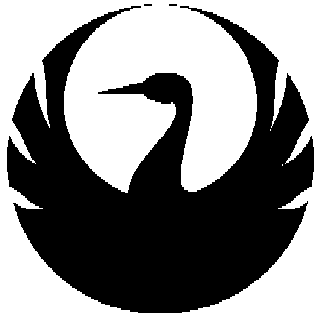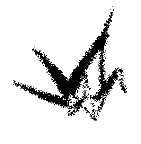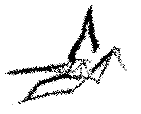 Another symbol which has come to be associated with peace is the ankh
or ansate cross. This is an ancient symbol which
was widespread through Asia but generally associated with Egypt, where the
cross represented life and the circle eternity, providing a symbol of immortality.
It also represented the union of the important gods Osiris and Isis, linking
heaven and earth and initiating the life-giving annual flood of the Nile.
Another symbol which has come to be associated with peace is the ankh
or ansate cross. This is an ancient symbol which
was widespread through Asia but generally associated with Egypt, where the
cross represented life and the circle eternity, providing a symbol of immortality.
It also represented the union of the important gods Osiris and Isis, linking
heaven and earth and initiating the life-giving annual flood of the Nile.
In the late 1960's the symbol was adopted by the 'flower power' generation
as a symbol of peace and truth.
 Like the ankh, the rainbow has come to be seen by many as a symbol
of peace. It has been widely used in the past few decades by popular
movements for peace and the environment.
Like the ankh, the rainbow has come to be seen by many as a symbol
of peace. It has been widely used in the past few decades by popular
movements for peace and the environment.
Greek mythology associated the rainbow with Iris, the goddess who
brought messages from the gods of Mount Olympus to the mortals below.
In ancient China the colours symbolise the union of yin and
yang (making it a common symbol for marriage). It was
often drawn as a symbol of the sky dragon, connecting heaven and earth.
The Incas of central America associated it with their sun god.
In Norse mythology it was a bridge built by the gods between earth
and their home in Asgard.
In Christian tradition it symbolised God's forgiveness, as it was
placed in the sky as the arch of peace after the Biblical flood - a symbol
of the covenant between God and mankind.
Thus in a great many cultures the rainbow stands as a symbol of people's
hope for a better world - in the sunshine after rain.
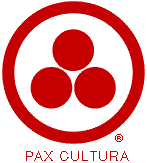 The Banner of Peace
symbol is being promoted as a universal symbol of peace. The
central three circles are taken to represent either past, present and future
surrounded by eternity, or religion, science and art encircled by culture.
The motif has been found in many cultures around the world over thousands
of years. Part of its appeal is that it is owned by no one group or
tradition.
The Banner of Peace
symbol is being promoted as a universal symbol of peace. The
central three circles are taken to represent either past, present and future
surrounded by eternity, or religion, science and art encircled by culture.
The motif has been found in many cultures around the world over thousands
of years. Part of its appeal is that it is owned by no one group or
tradition.
 Back to the Index
Back to the Index
|
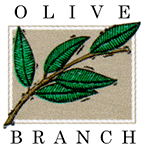 The olive branch has for thousands of years been used as a sign
of peace and goodwill. This may be partly due to the fact that in early
cultivation of the olive it took decades to bear fruit for harvest, and
it was held that anyone who planted olive groves must be expecting a long
and peaceful life and must be looking to posterity.
The olive branch has for thousands of years been used as a sign
of peace and goodwill. This may be partly due to the fact that in early
cultivation of the olive it took decades to bear fruit for harvest, and
it was held that anyone who planted olive groves must be expecting a long
and peaceful life and must be looking to posterity. 
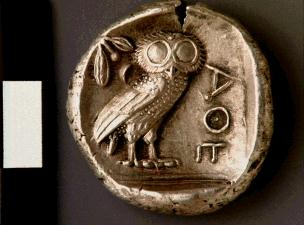
 The olive wreath or crown was the highest award given to a citizen in
ancient Greece. The prize was also given to winners at the ancient
Olympic Games - a time when wars were suspended between competing states.
The olive wreath or crown was the highest award given to a citizen in
ancient Greece. The prize was also given to winners at the ancient
Olympic Games - a time when wars were suspended between competing states.

 The
The 
